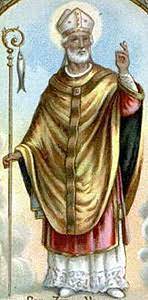A daily study of the Network’s diverse faiths

Ramadan.1.6 billion Muslims will at sunset begin 30 days of prayer and fasting until sunset on Wednesday 12 May. Ramadan is said to begin at the first observance of the new Moon over Mecca or on a date pre-determined by astronomical calculation. It the holiest and 9th month of the Islamic Calendar, when the Prophet (Muhammad, peace be upon him, PBUH, عَلَيْهِ ٱلسَّلَامُ, ʿalayhi s-salaam) received the first revelation of verses of the Qur’an in 609 CE, before the Islamic Hijri calendar started in 622. Muslims dedicate themselves to focussing on faith for spiritual renewal, with prayer and intensive devotional reading of the Qur’an. They fast from dawn until after sunset, taking no food or drink and abstaining from smoking and sexual relations. Following the custom of the Prophet (PBUH), the fast is traditionally broken each evening by taking dates and water with prayer, reading of the Qur’an and partaking of the iftar fast-breaking meal at the time of the call to the evening prayer. Muslims may also attend night prayers at the Mosque, believing that their good deeds bring a greater reward during this month than at any other time of the year. In Kerala, Ramadan is an important festival observed by Muslims to commemorate the day when the Holy Qur’an was sent by Allah to serve as a counsel for men and is a time to purify the body and soul and come closer to God. Ramadan ends when the crescent moon becomes visible on the western horizon and Eid al-Fitr (Festival of Breaking the Fast) is then celebrated for up to 3 days. Image: onenationuk.org.
Prayer We give Ramadan wishes and greetings with Ramadan Mubarak for a Happy Ramadan and say Ramadan Kareem for a generous Ramadan. May this Ramadan be filled with joy, health and wealth. All blessings for this holy month and may Allah bring peace and happiness. ʾĀmīn (آمين)

San Zenone da Verona (St Zeno of Verona) (c300-c371). Feast Day commemorating death of well-educated confessor of the faith, a Mauritanian early Christian Bishop of Verona who, after teaching African children about the Catholic faith, accompanied his master Athanasius, Patriarch of Alexandria, to Verona in 340. Zeno stayed in the city, lived as a monk until around 362 and was elected to the See of Verona. He baptised many people, won converts back from Arianism, lived a life of poverty, trained priests to work in the diocese, set up a convent for women and instructed that adult baptism be by complete immersion. Zeno built the first Basilica in Verona and the church that bore his name was consecrated in 806, 2 local hermits being assigned the task of translating Zeno’s relics to a new marble crypt in the presence of a large crowd. The church was damaged by Hungarians at the beginning of the 10th Century, rebuilt and re-consecrated in 967 and replaced by the present church of San Zeno during the 12th to 15th Centuries. Zeno was often said to combat the devil and in 588 when the floodwater inundating Verona reached the open church doors it miraculously did not enter. Many of Zeno’s 90 or so Sermones show evidence of his African origins, interpreting the Old Testament and having definite anti-Semitic elements. Venerated in Roman Catholic, Eastern Orthodox Churches. Major shrine Basilica of San Zeno, Verona. Feast Day for translation of relics 21 May. Patron of Verona, Campione d’Italia, fishermen, anglers, new-born babies and children learning to speak and walk. Image: catholicsaints.info.

Virgen de la Caridad del Cobre (Our Lady of Charity of El Cobre, Nuestra Señora de la Caridad del Cobre, La Cachita, La Vírgen Mambisa). Celebration of Queen and Patroness of Cuban peoples, one of the island’s most treasured figures, representing hope and salvation in the face of misfortune, whose image is one of several that since 1612 have existed around the world. They were taken by Spanish captains, as the 1494 Our Lady of Lacara venerated as patroness of La Garrovilla to guide and protect them from English pirates at sea, from Illescas in Toledo, where the original St Luke 50-60 CE image was venerated. Two Amerindian and an African slave child from the El Cobre copper mines were in a small boat off Santiago del Prado (now El Cobre) gathering salt for the preservation of the meat and prayed to the Virgin Mary for protection from a storm. The skies cleared and they saw a 16-inch baked clay statue of the Virgin Mary holding the child Jesus on her left arm and a gold cross in her right hand floating in the water, fastened to a board with the inscription: “Yo Soy la Vírgen de la Caridad (I am the Virgin of Charity)”. A small chapel was built in Barajagua in her honour but the image kept disappearing from the altar and she was taken to El Cobre, where the same happened. A young girl named Jabba pursuing butterflies and picking flowers near the mountains of the Sierra Maestra found the statue on top of a small hill and a church was built there. Venerated in Roman Catholic Church. Major shrine 1926 National Shrine Minor Basilica of Our Lady of Charity of El Cobre near Santiago de Cuba. In 1954, Ernest Hemingway donated his Nobel Prize in Literature medal for The Old Man and the Sea to the people of Cuba at the shrine of Caridad del Cobre. In 1961, 30,000 Cuban exiles at Miami Stadium feasted a 16-inch replica of the statue of Our Lady of Charity smuggled out of Cuba and a Shrine of La Ermita de la Caridad and was completed in 1973. Feast Day 8 September on the Feast of Nativity of the Blessed Virgin Mary. Patron of Cuba, Cuban peoples, salt and copper miners. Image: lahabana.com.
